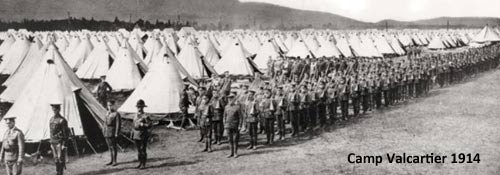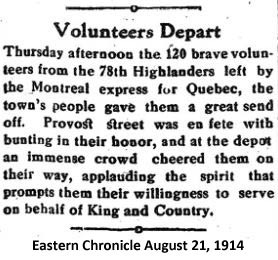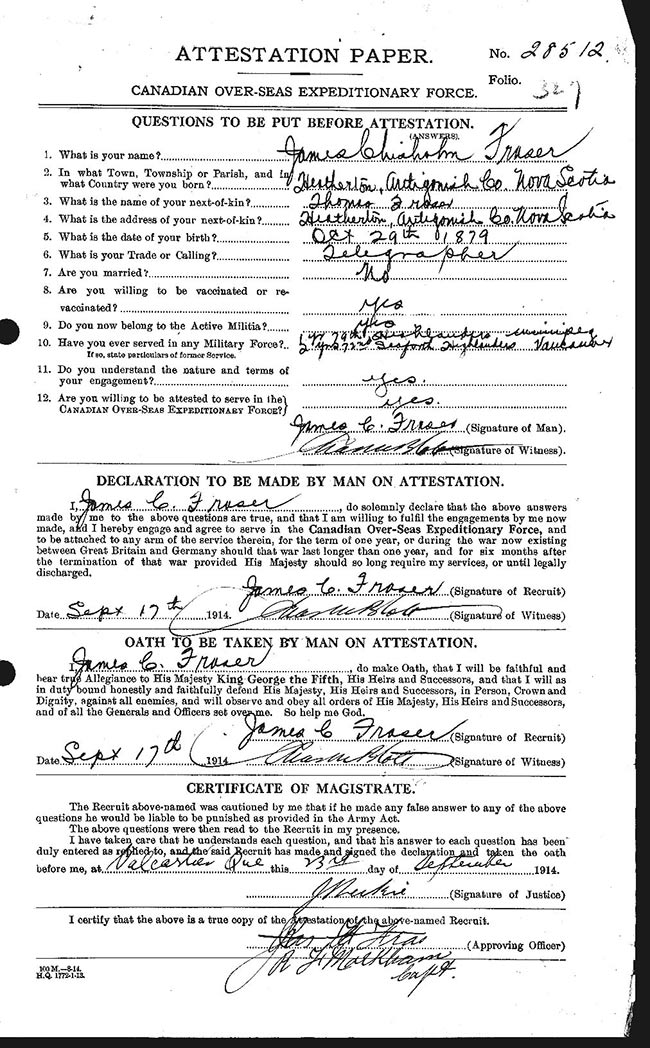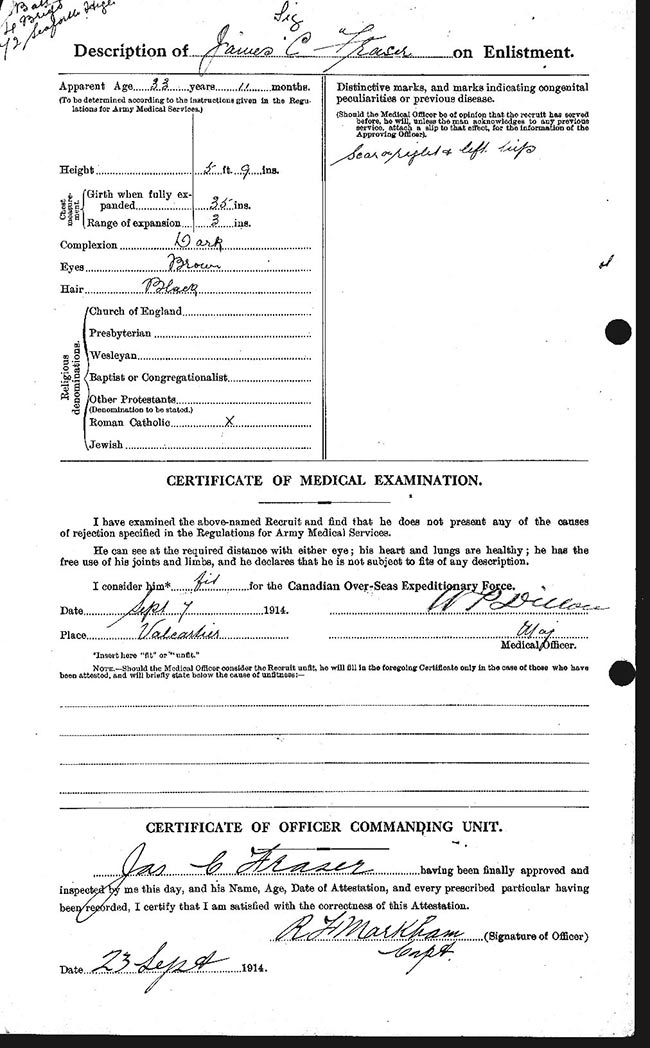Camp Valcartier, the 1st Contingent , and the 78th Pictou Highlanders

As Canada organized militia units for overseas it was necessary to create a marshalling and training area for the Canadian Expeditionary Force 1st Contingent (later known as the 1st Canadian Division). Minister of Militia Sam Hughes previously acquired land in Valcartier north-west of Quebec City and in less than a month after the Empire declared war the area was transformed to house thousands of men arriving by train as well as 5000 horses. It was here that a large number of local militias, such as the 78th Pictou County Highlanders, were merged into the familiar overseas battalions of the war. By September 8th 1914 32,665 men had assembled and were attested (personal details were recorded and the person signed agreeing to serve overseas). At Valcartier they undertook target practice as well as training in other techniques. It would not be inaccurate to say training was “basic” at best and the uniforms and equipment inadequate for what was to come. By September 23 the new battalions embarked on ships in Quebec and by October 1st 33 transports were heading into the Gulf of Saint Lawrence to meet their 6 British naval escorts off Gaspe. The Newfoundland Regiment, aboard a sealing ship, joined the convoy as it passed the Avalon Peninsula.

In northern Nova Scotia it was 120 men from the 78th Pictou Highlanders, as well as individual volunteers, who answered the call for the 1st Contingent. While named the “Pictou” Highlanders the militia unit was comprised of men throughout the neighbouring counties. On Thursday August 20, 1914 the 78th marched through Westville and Stellarton to the train station in New Glasgow. To cheering crowds the train left for Valcartier commanded by Colonel D.D. Cameron and Major Struan G. Robertson. The Nova Scotia volunteers were to form a 17th Infantry Battalion thereby ensuring their provincial identity. Despite being assured by the government this would be the case it became clear once overseas there would only be 16 infantry battalions. The 17th was broken up in England to supply men to the other battalions. The matter became public and formed a significant scandal in Nova Scotia and Ottawa. It would not be until the 2nd Contingent that Nova Scotia would have a battalion of its own.
To learn more about Valcartier or the 78th Pictou Highlanders we recommend the following materials. They can be borrowed through any of our branch libraries or from our online catalogue.
- Pictonians in Arms: A Military History of Pictou County, Nova Scotia by James M. Cameron. New Glasgow: Published by author, 1969.
- Official History of the Canadian Army in the First World War: Canadian Expeditionary Force 1914-1918 by G.W.L. Nicholson. Ottawa: Queen’s Printer, 1962. Online only at //www.cmp-cpm.forces.gc.ca/dhh-dhp/his/oh-ho/index-eng.asp
- Official History of Canadians in the Great War 1914-1918 by A. Fortescue Duguid. Ottawa: King’s Printer, 1938. 2 Volumes. Online only at //www.cmp-cpm.forces.gc.ca/dhh-dhp/his/oh-ho/index-eng.asp
View a copy of this information sheet in PDF format.
Attestation Paper of Lt. James Chisholm Fraser of Heatherton, Antigonish County. Signed September 17th, 1914 at Camp Valcartier, Quebec.


Attestation paper of James Chisholm Fraser courtesy of Library and Archives Canada: //www.bac-lac.gc.ca.
